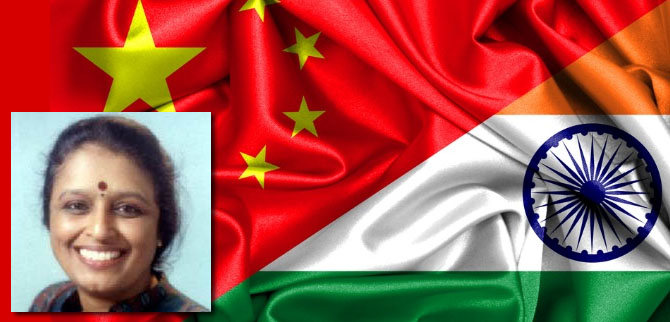
Crossing the Line: The Border as Verb by Nimmi Kurian, Associate Professor, Centre for Policy Research, Delhi, India.
Behind Delhi’s liberal discourse of borders as bridges hides a schizophrenic self. One that has become a prisoner of binaries, unwittingly caught as it were between crippling geopolitical fears and feel-good geoeconomic hopes. Not only has this resulted in a high order of uncertainty, it has also rendered its political signaling contradictory as well as unintelligible. In many ways, the borders constitute a land of contested symbols, conveying transitions and tensions, a liminal zone resisting change as much as it produces it. It is this central contradiction at the heart of India’s discourse on borders that needs to be foregrounded if its twisted logic is not to turn against itself and subvert the regional project in the process.
Many of these competing impulses go some distance in explaining why territory has today virtually become a conversation stopper in India-China relations. Despite the compelling immediacy of a 4056 km long border, it is intriguing that when we think of India and China we typically think of New Delhi and Beijing and not locations along the border. So entrenched has this imagined reality been that border regions today have become virtually invisible in India-China relations. Cross- cultural signposts such as Shigatse, Jelep La, Lohit, Chengdu, Ledo and Dali today hardly figure in the mainstream policy and research consciousness. Some of this reductive logic is more than evident in the fact that, even as bilateral trade has crossed $70 billion, much of it has passed the borders by.
Paradoxically, for borderlanders the border is both an invisible as well as an integral aspect of their social existence. Its invisibility stems from the fact that much of the transactions not ‘authorised’ by the state take place anyway, despite it. Such processes also point to a unique understanding of “interrelated territorialities’ with a highly complex ethno- geographical mapping of resources and places. It is clear that the starting point for any exercise on rethinking borders by default has to be but an acknowledgment of their sheer diversity and complexity. The politico-military understanding of borders as being mere geographical markers masks the enormous complexity that a border region encompasses. In a typically transnational frame, the border becomes not quite the ‘margin’ but the centre of a vast and bustling network of social and cultural flows. It is this traffic that is so vital to and an integral part of the everyday existence of border communities and which operate despite the exclusionary nature of territorial mapping. When the state seeks to ‘close’ its borders through formal measures, informal processes go on to ‘open’ the same border.
A fixation with the idea of borders as a state project has also meant that the role of transnational ethnic social networks in a border region is often not recognised as a form of social capital. Transnational social networks based on ancestral and kinship ties and interpersonal trust networks constitute a form of social capital that is integral to a transborder subregion, resting on a highly place-centric sense of self and community identity. A social history of trans-Himalayan trade reveals how transborder exchanges were characterised by highly personalised trust-based relationships. These performed a crucial economic function by helping to reduce transaction costs given the arduous challenges involved in conducting long-distance trade. Highly personalised trust-based informal networks characterised trans-Himalayan long distance trade. Trade ties were underwritten by trust-based ritual practices such as gamgya and netsang, unwritten contracts that inter alia included preferential terms of barter, besides access to grain and shelter. This personalised trust-based contract was mutually beneficial and its success can be measured from the fact that these often lasted for several generations being passed on from trader to the next of kin.
A re-engagement with the notion of borders will be incomplete without a critical re-engagement with the notion of the international itself. This in turn will require going beyond a limited geopolitical understanding towards a sociological one. The borderlands, far from being the ‘periphery’, are uniquely positioned at the intersection of national and cultural crossroads and bring several crossover disciplinary and policy insights. If these are dismissed as illegal, or worse as irrelevant, such rich narratives would have no hope of finding entry points into the mainstream discourse. The lived experiences of border communities have to be at the centre of any new rethinking on borderlands. Delhi’s discourse on borders runs the risk of becoming a marginalised narrative if it fails to connect with the lives of the people. If it is to succeed, it will need to cross the discursive line and reimagine the border as verb.
© Nimmi Kurian

